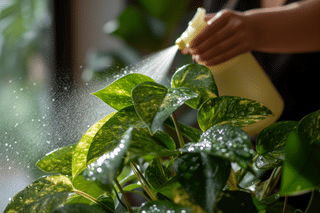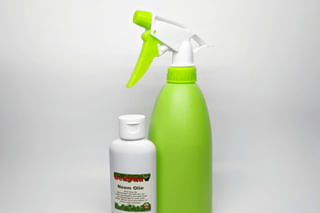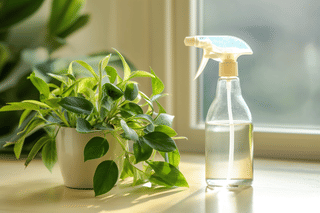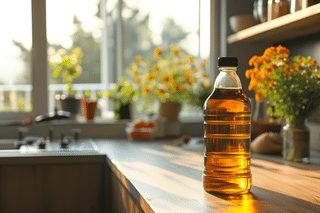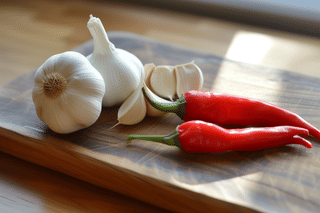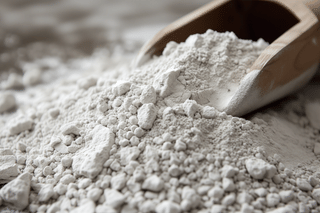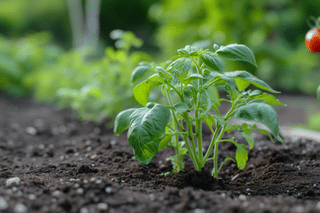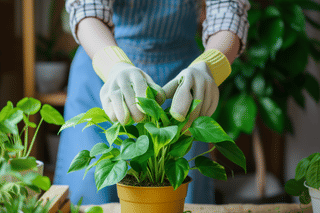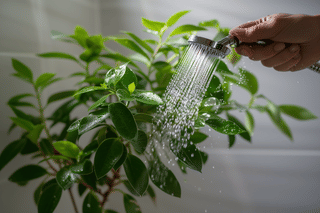Eco-friendly ways to control plant pests
Discover eco-friendly pest control strategies with our comprehensive guide. Learn about using horticultural oils, DIY sprays, and companion planting to safeguard your plants naturally. Perfect for garden enthusiasts seeking chemical-free solutions.
If you want to treat the pests on your plants but prefer to not use chemicals, you'll need to get a little more creative to find ways to fight pests. Luckily, there still are several great options you can try. Nature has given us a few solutions that are harmless to your plants but very effective against pests.
These are the natural ways to control plant pests we're going to look at in this guide:
Let's get rid of pests the natural way and help our plants thrive!
Neem Oil
Neem oil is produced from the seeds of the neem tree and is an eco-friendly plant owner's dream come true for pest control. Neem oil is a versatile, all-natural solution for gardeners who are looking for effective pest control without any harmful chemicals. Simply mix this natural wonder with water and a few drops of non-toxic liquid dish soap and you're ready to treat your plant against pests!
So, why is neem oil so effective against pests? It's all due to some bioactive compounds, particularly azadirachtin, which are very harmful to some pests. When you spray a neem oil solution on your plants, the process of getting rid of your pests starts. It messes with their hormones, so they stop eating your plant's leaves, laying eggs, and growing.
Neem oil is especially effective against aphids, spider mites, and mealybugs. Neem oil is also a great way to prevent pests from getting to your plant in the first place. By regularly spraying your plant, you help to keep the pests away.
Insecticidal Soaps
Insecticidal soap is a simple and eco-friendly solution for getting rid of bugs like aphids, spider mites, and whiteflies that can damage your plants. It works by coating and suffocating these soft-bodied pests when sprayed directly on them. The soap disrupts their outer layer and makes it hard for them to breathe and stay hydrated.
You can make this bug spray yourself at home using just a couple of ingredients. All you need is a mild liquid soap (like dishwashing soap that doesn't have extra chemicals for fragrance or skin moisturizing) and water. You mix a small amount of the soap with water, then put the mixture in a spray bottle. When you spray it on the affected plants, be sure to hit all the spots where the bugs might be hiding, especially under the leaves.
It's best to use the spray in cooler times, such as early morning or late evening, because if it's too hot or sunny, the leaves might get damaged. Always test the spray on a few leaves first to make sure your plants can handle it without any issues. Since insecticidal soap is gentle on the environment and breaks down quickly, it won't leave harmful residue behind, making it a favorite choice for gardeners who prefer natural pest control methods.
Horticultural Oils
Horticultural oils are shields for your plants, offering a protective barrier that keeps pests away. These oils are a great choice for dealing with a variety of plant pests, like aphids, spider mites, and mealybugs. They're effective because they interfere with the insects' cells, not necessarily by suffocating them but by messing with how they function.
You have options when it comes to the type of oil you use. There are mineral-based oils and plant-based ones, like cottonseed oil. Each has its advantages, but they all serve the same purpose: keeping your plants pest-free. When you apply these oils to your plants, you're creating a hostile environment for those bugs. They find it tough to move around or feed, which stops them from causing damage to your plants.
Not only are horticultural oils good at warding off insects, but they're also pretty safe to use. They tend to be gentle in the environment, have minimal odor, and don't leave a nasty residue. Some can even help fight against fungal diseases like powdery mildew, rust, and sooty mold.
Horticultural oils are most effective on younger, more vulnerable insects, so it's important to regularly check your plant for pests to help fight them off.
Garlic or Chili Spray
Garlic and chili are not only great for cooking, but they can also be the secret ingredient in your plant protection recipe. These spicy and strong-smelling ingredients are fantastic at keeping pests away from your plants. It's like making a natural pest repellent at home.
When you blend garlic or chili with water and maybe a bit of soap, you create a spray that bugs find off-putting. The strong smell is overwhelming for them. Spraying this mixture onto your plants acts as a homemade bug alarm, signaling to pests that it's time to clear out.
Using this natural mix won't harm your garden or indoor plants, and it's safe for the environment. When you use these sprays, make sure to not use too much, because these sprays do tend to smell quite a bit. A little bit goes a long way.
Diatomaceous Earth
Diatomaceous earth is a unique, natural powder created from the fossilized remains of diatoms, which are small aquatic organisms. When these fossils are turned into a fine powder, they become a substance well-known for having many uses, including its ability to control pests in gardens and indoors.
This powder is quite special as it's soft to the touch but microscopically sharp and abrasive. This rough quality is what makes diatomaceous earth so effective for pest control. It works by getting through the protective outer layer of insects' exoskeletons, which dehydrates them. But while this is tough on pests, it's safe for us and our pets, which is why it's very popular as an environmentally friendly pesticide.
You can use diatomaceous earth by lightly sprinkling it around plants or in areas where you notice insects. This powder works best for spider mites, aphids, mealybugs, fungus gnats, thrips, and scale insects. It's important to apply the powder correctly by dusting the soil and foliage where needed and reapply after watering, as it's not effective when it's wet.
Companion Planting
Integrating companion plants into your garden/home is a smart way to improve your plant's defenses against pests. Marigolds, for example, are great neighbor plants, because they emit a scent that repels many types of insects.
By strategically placing these and other aromatic plants in your houseplant collection, you create an uninviting environment for these pests. Outdoors, this method not only improves your garden's overall health but also promotes biodiversity, as some of these companion plants can attract beneficial insects that help with pollination and pest control.
Manual Removal
At times, a traditional hands-on approach is remarkably effective for pest control. With gloves and patience, you can go on a mission to remove these pests by hand. Inspect your plants closely to spot pests, then carefully remove them by hand and make sure to keep them away from any plants while you remove them.
It's a simple, direct tactic that helps you protect your plants without any need for pesticides. This method not only gives you immediate results but also allows you to inspect your plants thoroughly at the same time. This way you can spot problems early on.
A jet of water
Water isn't just for keeping plants alive, but it's also a handy tool in the fight against pests. A quick blast from your garden hose or shower head can knock off those tiny pests and give your plants a good cleaning. It's a straightforward, effective way to keep your garden healthy without any harsh chemicals.
Remember, always patch-test these natural remedies on a small area before you do the whole plant.
Thank you for reading this post! I hope it helps you to keep your plants healthy and beautiful! If you're looking for more guides on specific plants, you can always request a plant guide to get a guide for the plant you have trouble with.
Test your plant care knowledge
Quiz completed!
Want to learn more? Sign up for my newsletter to receive free tips in your inbox!
Sign up now!